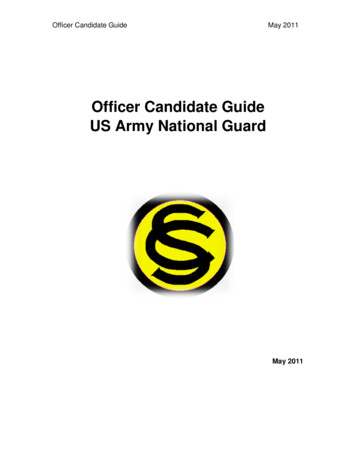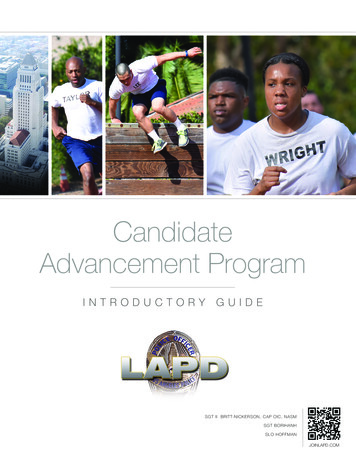
Transcription
CandidateAdvancement ProgramINTRO D UCTOR YGUIDESGT II BRIT T-N ICKERSON , CAP OIC, N ASMSGT BORIHAN HSLO HOFFMANJOINLAPD.COM
CandidateAdvancement ProgramI N T R O D U C T O R YG U I D EAmong the most difficult challenges facedby police officer recruits are the physicalrequirements of the police academy. To assistin this preparation, the Los Angeles PoliceDepartment offers the Candidate AdvancementProgram (CAP). This program preparescandidates for the physical fitness demands ofthe academy and serves as an introduction to theacademy training style. Candidates are eligible toparticipate in CAP after taking the LAPD PersonalQualifications Essay (PQE).Welcome to the LAPD Candidate Advancement Program(CAP). This Introductory Guide provides details regardingwhat to expect at CAP sessions. It provides an introduction tofacing movements, formations, examples of academy cadence, andbasic information regarding the LAPD. As part of your preparationfor the physical challenges of your career in law enforcement, andyour transition into a quasi-military organization, you are expectedto familiarize yourself with the material contained in this guide.CAP is the first step in your transition to police officer. It is anacademy-style environment where candidates learn discipline,respect, command presence, self-confidence, team concept,importance of following directions, and gain maturity. Additionally,CAP provides candidates the opportunity to obtain answers toquestions that rise as they progress through the selection process.2L O SA N G E L E SP O L I C ED E PA RT M E N T C A N D I D AT EFirst CAP SessionUniform: Candidates are not required to wear the CAPuniform on their first CAP session. They are required to wearappropriate physical training attire. During the first session,candidates will receive further instructions (or read page 11 formore information).CAP Session Agenda:1. Each CAP session begins with a warm-up jog and stretch.2. Candidates separate into three running groups (beginner,intermediate, or advanced), based on individual candidate’sphysical fitness level. The beginner group includes firsttime candidates (orientation), and candidates who haveengaged in a minimal amount of physical training prior toA D VA N C E M E N TP R O G R A M
Physical Fitness Qualifier (PFQ)The first week of every month each CAP location conductsthe Physical Fitness Qualifier (PFQ). The PFQ consists offour events: 1) maximum sit-ups in on minute, 2) 300-metersprint, 3) maximum push-ups in one minute, and 4) 1.5mile-run. This is the same physical fitness test that academyrecruits take the third day of the police academy. Candidatesreceive their score at the end of the PFQ. Passing score is70%. This helps candidates track their progress, and assesstheir physical fitness before entering the LAPD academy.»CAP. Orientation will run with the beginner group, regardlessof fitness level. The intermediate running group includescandidates whose physical fitness level has exceeded thechallenge posed by the beginner group. The advanced groupincludes candidates who have reached a physical conditionlevel where participation in the intermediate group is nolonger a challenge. The beginner group runs approximately1.5 miles, the intermediate group runs approximately 3-4miles, and the advanced group runs up to 6 miles.3. Upon returning to the CAP location the class will participate inphysical training exercises (such as push-ups, sit-ups, squats,leg-lifts, and lounges), for approximately one hour.4. The final part of each CAP sessions consist of cool-downstretches.Tips:1. Be humble. LAPD officer are public servants sworn to actin the best interest of the public, and they cannot allowtheir feelings, ego, or personal preferences affect the waythey perform their job. In preparation for this job, LAPDcandidates must leave their personal life, job title, andaccomplishments outside CAP. This begins with basicmanners, such as responding, “Yes, Sir/Yes, Ma’am” or “No,Sir/No, Ma’am,” and it extends to obeying every commandfrom instructors and/or squad leaders.2. 100% effort required. One of the main goals of CAP is tohelp candidates achieve a fitness level that will ensure theirsuccess in the academy. To accomplish this, candidatesare required to participate with maximum effort on eachexercise and/or activity.L O SA N G E L E Shttps://youtu.be/I3z70K7Yp5M3. Grooming. CAP participants are required to adhere to specificgrooming standards. Males will maintain a haircut appropriatefor business setting, and no beard/goat-tee. Females mustkeep their hair in a tight bun, and are not allowed to wearmake-up. Participants are required to cover all tattoos.4. Hydrate prior to CAP! Ensure you hydrate sufficientlyprior to attending CAP. Hydration begins the day prior toyour CAP session and continues throughout the day of yourworkout session. Proper hydration consists of drinking water,not fruit juice or carbonated drinks.5. Candidates are encouraged to not eat immediately priorto the CAP session; allow sufficient time for digestion(2-3 hours).6. During evening sessions, candidates must have a small handheld flashlight available for use. Certain areas of the groupruns are poorly lit, and flashlights become necessary.7. Fitness trackers. Candidates are encouraged to use fitnesstrackers as part of their regular workout routine. Watchesand jewelry are not allowed.Things to RememberLocationPolice officers must know their location at all times. To ensurecandidates begin to develop location awareness, candidates arerequired to know their location as they run through the streets.One candidate will state the names of the cross-streets and thedirection of travel, as they cross or approach each intersection.The rest of the detail will repeat (sound-off) the names of thecross-streets and the direction of travel.P O L I C ED E PA RT M E N T C A N D I D AT EA D VA N C E M E N TP R O G R A M3
forward!” The class will face forward, and simultaneouslyanswer-up, “Yes, Sir!” or “Yes, Ma’am”.Main St1Reasons for sounding off:1 . So candidates force themselves to breathe during runs. A lot ofpeople concentrate fully on the PT workouts, and they forgetto breathe. Sounding off allows them to take-in more oxygen.Cesar E. Chavez Ave2. When officers are involved in foot-pursuit (pursuing asuspect), officers need to broadcast over the radio whilerunning. Sounding off during workouts prepares candidatesfor broadcasting during foot-pursuit.3. Through sounding off, candidates begin to develop commandpresence.2Main StWhy Instructors YellInstructors yell to simulate what candidates will encounter outon the streets, as police officers. Similar to the academy, CAPinstructors yell to simulate the stressors officers face on thestreet. On the street, many suspects yell insults at officers, tryingto provoke a response. CAP and academy instructors preparecandidates to conduct their work in stressful situations andremain calm. Additionally, instructors yell to motivate recruits’perform and effort level.Cesar E. Chavez AveCommandsExample 1:If the run group is running northbound Main Street, crossingCesar Chavez, candidates will state, “Northbound Main Street,crossing Cesar Chavez Avenue.”Example 2:If the run group is turning northbound onto Main Street, fromCesar Chavez, the candidates will state, “Northbound MainStreet, from Cesar Chavez Avenue.”Sound Off“Sound Off” refers to the act of repeating a response, orcounting repetitions during PT. For example, when a candidatestates the group’s location, all candidates will “sound off”repeating the location.Answer-up“Answer-up” refers to the act of responding to instructors’orders. For example, if the instructor commands, “Class, face4L O SA N G E L E SP O L I C ED E PA RT M E N T C A N D I D AT EA command is an oral order given by an instructor, class leader,or squad leader. Commands must be executed with precise, crispmovement.Two-part commandsMost drill commands have two parts. The first part is thepreparatory command, and the second part is the commandof execution. The preparatory command states the movementthat will be carried out and mentally prepares candidates forthe command of execution. The command of execution tellscandidates when the movement is to be carried out.For example, in the command, “Atten Tion”. “Aten” isthe preparatory command and the “Tion” is the command ofexecution. Do not anticipate the command of execution. In otherwords, do not execute the command before the command ofexecution has been given. In some commands, the preparatorycommands and the command of execution are combined. Ex:“Fall.In” or “At.Ease”A D VA N C E M E N TP R O G R A M
Parade RestParade Rest is given from the position of attention only. Thepreparatory command is, “Parade”. On the command of execution(“Rest”), move your left foot approximately 12 inches to the left ofyour right foot, weight resting evenly on both feet. Feet will remainat a 45 degree angle. As your left foot moves left, simultaneouslyplace your hands at the small of your back, centered back, righthand over the left hand. The fingers are extended, palms facingoutward (right hand inside the left), and the thumbs interlocked.Head and eyes are facing forward (same as the position ofattention). There is no movement or talking while in Parade rest.Position of AttentionAt EaseThis is the relaxed form of parade rest. Candidates will remainat Parade Rest, but minimal movement is allowed. Whilecandidates are allowed to adjust equipment, the feet must remainin place. Low conversation is allowed.Parade RestRight Face (Makes you face right)The preparatory command is, “Right”. On the command ofexecution “Face”, slightly raise your left toe and right heel, and turn90 degrees to the right, pivoting on your right heel, assisted by aslight pressure on the ball of your left foot, for the first count. Thenplace your left foot smartly beside your right foot for the secondcount. Hold your arms at attention when executing this movement.Position of AttentionThis is the basic position from which all commands are executed.Assume the position of attention on the command, “Fall In” orthe command, “Atten.Tion”. To assume the position of attention,bring your heels together, aligned on the same line. Toes will pointout equally, forming a 45 degree angle. Keep your legs straight,but do not lock your knees. Hold your body straight, chin down,chest out, and gut sucked in. Pretend there is a roll of quarters ineach hand (make a loose fist), and bring the hands to the seam ofyour pants. Thumbs will point straight down. Your head and eyeslooking straight forward without looking around (find a point inthe background, and continue to stare at that, even if an officerwalks up to you). Your weight will be distributed equally on theheels and balls of your feet. Keep your head and body straight There is no talking while in position of attention Eyes are forward, focused on something in the distance, oron the back of the head of the person in front of you There is absolutely no movement while in position of attentionL O SA N G E L E SLeft Face (Makes you face left)The preparatory command is, “Left”. On the command of execution“Face”, slightly raise your right toe and left heel, and turn 90degrees to the left, pivoting on your left heel, assisted by a slightpressure on the ball of your right foot, for the first count. Then placeyour right foot smartly beside your left foot for the second count.Hold your arms at attention when executing this movement.About Face (Makes you face the opposite direction)The preparatory command is, “About”. On the command ofexecution “Face,” move the toe of the right foot approximatelyon-half of the length of your foot to the rear and slightly to theleft of the left heel. You should have made a small reverse “C”with this movement. Raise your left toe and spin 180 degrees tothe right, pivoting on the left heel and right toe. When you cometo a halt, you will be standing at the position of attention.Click on the link below, to view a video showing the drillmovements. Learning these basic drill movements will help youprepare for the LAPD academy.»P O L I C Ehttps://youtu.be/86vtz2Z5GLgD E PA RT M E N T C A N D I D AT EA D VA N C E M E N TP R O G R A M5
Drill TermsFormation: An arrangement of candidates in line, in column,and/or in rank, in a prescribed manner.Column: A formation in which candidates are placed one behindthe other.File: A single column of candidates, one behind the other.Alignment: The dressing of three or more candidates, in astraight line.Step: The distance from heel to heel between the feet of amarching candidate.Physical Training Formation (PT Formation)During physical training, the CAP class will form in four squads.With both arms extended out at shoulder height, side-by-side,candidates remain fingertips to fingertips. Candidates turn theirhead to face right, with the chin over the right shoulder. Heelswill be together and toes will be separated at approximately45 degree angle. Candidates remain at this position until theinstructor gives the command, “Detail, ready. Front!” Upon thiscommand, candidates promptly snap their arms to their side,simultaneously turn their head to face forward, close their handsinto a loose fist, and assume position of attention.Column of TwoThe Column of Two command is given to put the detail intotwo squads. The instructor will raise both arms over-head, withL O SA N G E L E SP O L I C ED E PA RT M E N T C A N D I D AT EColumn of FilesThis command is used when the class is formed in squads, and itis necessary to advance in a single file. It is always initiated fromstanding at halt. The command can be executed from the right orleft, as in, “Column of files from the left.March,” or “Columnof files from the right.March.”Preparatory command: “Column of files from the left” (or right).Command of execution: “March,”Formation6clenched fists, and state, “Detail, two squads on me. Move!”Upon the command of execution “Move”, candidates will doubletime to form two squads facing the instructor. One squad willline-up to the right and the left of the instructor. Candidates willremain at attention.The class leader will give the preparatory command, “Columnof files from the left.” Squad Leader 1 will turn his/her head tothe left and command, “Forward”. Squad Leaders 2, 3, and 4will turn their heads to the left and command (in unison), “StandFast” (this means, squads 2, 3, and 4, do not move). SquadLeader 1 turns his/her head forward. Squad Leaders 2, 3, and 4remain facing left.The class leader gives the command of execution, “March”.Squad 1 begins marching (or double time). As the last candidatein Squad 1 passes by Squad Leader 2, he/she will state, “Last”.Squad Leader 2 will command, “Forward, March”. If marching,the command, “March” must be given as the right foot of Squad1 strikes the ground, in order to be instep with Squad 1. SquadLeader 2 turns his/her head forward, steps off with the left foot,and begins to march in single file behind Squad 1.A D VA N C E M E N TP R O G R A M
Squads 3 and 4 will execute this movement int he same manneras Squad 2. Squads will march in a single file.Warm Up/Cool Down ExercisesStanding StretchesCandidates will form in physical training formation(PT formation), and while standing, they will perform thefollowing stretches: Neck Rotation Shoulder Stretch Standing Hamstring Stretch Quad Stretch Calf StretchNote: This command can be given as, “Column of files from theleft,” or “Column of files from the right.”Breaking Ranks (not allowed)Breaking ranks refers to cutting between recruits when leaving aformation. Breaking ranks is not allowed.When a candidate is ordered front and centered, as in,“Candidate Smith, Front and center,” candidate Smith shallanswer up, “Yes, Sir!” If the formation is not at Position ofAttention at the time the command is given, the candidate mustcome to Attention before answering up.Stretches for Seated Position of Attention The Secretary Seated Hamstring Stretch Groin Stretch Lateral Stretch Modified Push-up PositionThe candidate will take one 15-inch step backward, with theleft foot, halt, and right or left face to the nearest flank. Uponclearing the formation, the candidate will double time towardsthe instructor who gave the command. The candidate willhalt at Position of Attention approximately two steps from theinstructor, and state, “Candidate Smith, Sir!” The candidate willremain at attention until ordered otherwise.Leading Warm-up/Cool-down Use two-part commands. State, “Position of Exercise Move” before eachstretch/exercise. Begin each exercise with the left State, “Ready, Begin” to start the exercise State, “Remember to always look forward” for some exercises State, “Recover” when the exercise is complete Remind candidates, “Do not anticipate the commands” Recover to standing position of attention when each exerciseis completeWhen dismissed, the candidate will take one 15-inch stepback, about face (or right or left face, as appropriate), doubletime back to the squad position, and assume the Position ofAttention.Divisions & Bureaus1. Central11. Northeast24. Central Traffic2. Rampart12. 77th Street25. South Traffic3. Southwest13. Newton34. West Traffic4. Hollenbeck14. Pacific35. Valley Traffic5. Harbor15. North HollywoodBureaus6. Hollywood16. Foothill7. Wilshire17. DevonshireCentral: Central, Rampart, Northeast,Hollenbeck, Newton8. West Los Angeles18. Southeast9. Van Nuys19. Mission10. West Valley20. OlympicValley: Foothill, West Valley, Van Nuys,Devonshire, North Hollywood21. TopangaSouth: Harbor, SE, SW, 77thL O SA N G E L E SWest: West LA, Pacific,Hollywood, WilshireP O L I C ED E PA RT M E N T C A N D I D AT EA D VA N C E M E N TP R O G R A M7
Radio Communication CodesPhonetic CodesCode 1:RTO (Radio Telephone Operator) transmits thiscode when a unit does not acknowledge to previoustransmissions. Ex: “1A12 Code 1.” Unit mustacknowledge immediately.When spelling names (suspects, victims, witnesses, orstreet names) over the radio, LAPD uses the followingphonetic alphabet. Using this alphabet eliminatesconfusion between letters such as, “D” and “T”, or “S”and “F”, which over the radio sound indistinguishable.A: AdamJ: JohnS: SamB: BoyK: KingT: TomC: CharlesL: LincolnU: UnionD: DavidM: MaryV: VictorE: EdwardN: NoraW: WilliamF: FrankO: OceanX: X-rayG: GeorgeP: PaulY: YoungH: HenryQ: QueenZ: ZebraI: IdaR: RobertCode 2:Urgent radio call to be handled immediately without lightsor sirens.Code 3:Emergency call (immediate threat to life or personalsafety). Red lights and siren are authorized. Ex: “15A29,Officer needs help, 211 in progress at Bank of America,at Laurel Canyon and Kittridge. Suspects armed withAK-47s.”Code 4:Situation is under control. No additional units required.Code 4 Adam:No additional units required but suspect still in the area.Badge Description1. The border design is basedon the fasces, the ancient2Roman symbol of authority.2. Designation of rank.3. The rays of a setting sunrepresent the West Coast.Code 5:Units on a stakeout. Other units stay out of area.1Code 6:Unit is out of vehicle conducting a field investigation. Noassistance needed.3Code 6 Adam:Officer needs assistance conducting a field investigation.44. Replica of City Hallwith three symboliccharacteristics: The rising5lines in the tower depict thetireless and unwavering spirit6of the City’s founders; theflanking wings represent the7expansive growth from the first “ElPueblo”; the broad base signifies the City’s firm foundation.Code 6 George: Officer may need assistance in conductingan investigation involving gang activity.Code 6 Mary: Officer may need assistance concerningmilitant activity.Code 8: General information of a reported fire. Done whenthere is a high fire hazard or danger to fire personnel by ahostile crowd. Ex: the 1992 riot.Code 8 Adam: Verified fire at a specific location.5. The City Seal depicts the City’s history through Spanish,Mexican, autonomous and United States control; its siteas a prolific garden spot; and the early influence of themission padres.Code 10: Used to clear the frequency for a want/warrantcheck on a suspect(s) or a vehicle.6. Designation of city and department.7. An area designated for the badge number or symbol of rank.Code 12: Response to a false alarm and no evidenceof forced entry. Ex: “14A29, show Code 12 at 5651 W.Manchester. Scene is secure.”8. The oval shape of the badge was unique in badge designwhen adopted in 1940.8L O SA N G E L E SP O L I C ED E PA RT M E N T C A N D I D AT EA D VA N C E M E N TP R O G R A M
Code 20:Newsworthy event or major accident. Use discretion whenadvising the RTO.Code 30:Silent burglar alarm reported by an alarm company.Code 30 Adam:Silent alarm and alarm company is monitoring location audibly.Code 30 Victor:Alarm company is visually monitoring suspect via video camera.Code 100: A suspect(s) possible escape route. This is when unitssit at a location waiting for suspect(s) to come by. Ex: vehicle orfoot pursuit.Code Robert:UPR (Urban Police Rifle). This is a request for a unit capable ofdeploying such a weapon.Code Sam:Request for a unit capable of deploying a bean bag.Penal Codes used as Radio Codes211: Robbery415: Disturbance459: BurglaryStreet AddressesEven street numbers for an address are normally located on thesouth side or on the east side of the streetSEE: South-East-EvenOdd street numbers for an address are normally located on thenorth or east side of the streetNOW: North-Odd-WestLAPD Use of Force PolicyLaw enforcement officers are authorized to use deadly force to:1. Protect themselves and others from what is reasonably believedto be an immediate threat of death or serious bodily injury; or,2. Prevent a crime where the subject’s actions place person(s) inimminent jeopardy of death or serious bodily; orCode Tom:Request for a unit capable of deploying a Taser.Roger:Acknowledgment of a transmission.EOW:It stands for End of Watch. This is the end of an officer’s shift.3. Prevent the escape of a violent fleeing felon when there isprobable cause to believe the escape will pose a significantthreat of death or serious bodily injury to the officer or others ifapprehension is delayed. In this circumstance, officers shall, tothe extent practical, avoid using deadly force that might subjectinnocent bystanders or hostages to possible death or injury.Piper Tech:Building where the Airship are stationed.PAB:Police Administration Building. LAPD headquartersShop:LAPD black/whiteTactical Alert:When a major incident occurs and selected bureaus are to staybeyond EOW. E.g. earthquake or civil disturbances.TC:Traffic collisionIDOLBALKSI: ImminentD: DefenseO: OfL: LifeB: BackgroundA: AgeL: Last resortK: Knowledgeof the circumstancesS: Seriousness of the crime4 Basic Gun Safety Rules1. All guns are always loadedHelp:Emergency call, when immediate assistance is required. Back-upshall respond code-3. “1A12, Officer needs help. Officer down atLos Angeles and Temple.”2. Never allow the muzzle to cover anything you do notintend to shoot3. Keep your finger off the trigger until your sights arealigned on target, and you intend to shoot4. Be sure of your targetL O SA N G E L E SP O L I C ED E PA RT M E N T C A N D I D AT EA D VA N C E M E N TP R O G R A M9
a long history of integrity and freedomfrom corruption. Upholding this proudtradition is a challenge we must allcontinue to meet.The Mission Statement of the LAPDIt is the mission of the Los Angeles Police Department tosafeguard the lives and property of the people we serve, toreduce the incidence and fear of crime, and to enhance publicsafety while working with the diverse communities to improvetheir quality of life. Our mandate is to do so with honor andintegrity, while at all times conducting ourselves with thehighest ethical standards to maintain public confidence.Core ValuesService to Our CommunitiesWe are dedicated to enhancing publicsafety and reducing the fear and theincidence of crime. People in ourcommunities are our most importantcustomers. Our motto “To Protect and toServe” is not just a slogan - it is our wayof life. We will work in partnership withthe people in our communities and do ourbest, within the law, to solve communityproblems that effect public safety. Wevalue the great diversity of people in bothour residential and business communitiesand serve all with equal dedication.Reverence for the LawWe have been given the honor andprivilege of enforcing the law. We mustalways exercise integrity in the use ofthe power and authority that have beengiven to us by the people. Our personaland professional behavior should be amodel for all to follow. We will obey andsupport the letter and spirit of the law.1 0L O SA N G E L E SP O L I C ECommitment to LeadershipWe believe the Los Angeles PoliceDepartment should be a leader in lawenforcement. We also believe that eachindividual needs to be a leader in his orher area of responsibility. Making surethat our values become part of our dayto-day work life is our mandate. We musteach work to ensure that our co-workers,our professional colleagues, and ourcommunities have the highest respect forthe Los Angeles Police Department.Integrity in All We Say and DoIntegrity is our standard. We are proudof our profession and will conductourselves in a manner that meritsthe respect of all people. We willdemonstrate honest, ethical behaviorin all our interactions. Our actions willmatch our words. We must have thecourage to stand up for our beliefs anddo what is right. Throughout the ranks,the Los Angeles Police Department hasD E PA RT M E N T C AN D I D AT EA D VA N C E M E N TP R O G R A MRespect for PeopleWorking with the Los Angeles PoliceDepartment should be challengingand rewarding. Our people are ourmost important resource. We canbest serve the many and varied needsof our communities by empoweringour employees to fulfill theirresponsibilities with knowledge,authority, and appropriate discretion.We encourage our people to submitideas, we listen to their suggestions,and we help them develop to theirmaximum potential. We believe intreating all people with respect anddignity. We show concern and empathyfor the victims of crime and treatviolators of the law with fairness anddignity. By demonstrating respect forothers, we will earn respect for the LosAngeles Police Department.Quality Through ContinuousImprovementWe will strive to achieve the highestlevel of quality in all aspects of ourwork. We can never be satisfied with the“status quo.” We must aim for continuousimprovement in serving the people inour communities. We value innovationand support creativity. We realize thatconstant change is a way of life in adynamic city like Los Angeles, and wededicate ourselves to proactively seekingnew and better ways to serve.
Uniform and AccessoriesPlain crewneckwhite t-shirtno pockets, no V-neckCrew-neck sweatshirtNo hoods, zippersor pocketsLast name acrosschest & back.2-inch capital lettersLast name acrosschest & back.2-inch capital lettersRoyal blue gym orrunning shortsPlain gray drawstringsweatpants withelastic ankleMid-calf,plain white socks Gray hood-less sweatshirt and sweatpants with no pockets or logos. White, crew-neck t-shirt (no V-neck,pockets or logos) Dark blue, running shorts (nopockets or logos) White cotton socks (no stripes orlogos) Black or white sports bra (females) Running shoes Flashlights (required for eveningsessions Oct through Apr)Devonshire StationAll candidates must park at the cornerof Devonshire and Etiwanda.Running shoes T-shirts and sweatshirts must havecandidate’s last name on the frontand back, six inches below the collar,in two-inch block letters.AccessoriesA N G E L E SP O L I C ED E PA RT M E N TMon & Weds: 6-9:00 PMSat: 7:30-10:30 AMARTC Academy5651 W. Manchester BoulevardLos Angeles, CA 90045Tues & Thurs: 6-9:00 PMRings, bracelets, necklaces, earrings,visible pierced jewelry items,headbands, gloves, weight belts,and watches are not allowed at CAPsessions. Only fitness trackers may beworn during CAP sessions.L O SElysian Park AcademyAll candidates must park on AcademyRoad. No parking is allowed onAcademy parking lots or Academydriveway (leading into the Academy).Exception: on Dodger game nights,when the parking on the street islimited, candidates may park on thelower Academy parking lot in the areanearest o Academy Road.ARTCAll candidates must park in the frontparking lot of the Academy.Mid-calf,plain white socksRunning shoesParkingElysian Park Academy1880 N. Academy DriveLos Angeles, CA 90012Devonshire Community Police Station10250 Etiwanda Avenue, Northridge, CA 91324Meet at Devonshire Park: Devonshire and Etiwanda C A N D I D AT EA D VA N C E M E N TP R O G R A M1 1
LO SA N GE LESPOL ICEDEPART M ENTRecruitme nt a nd Employ me nt Division700 E. Templ e StreetLo s Ang el es, C A 900122 13-473-3450 J o i nLAPD.co m
Cesar Chavez, candidates will state, "Northbound Main Street, crossing Cesar Chavez Avenue." Example 2: If the run group is turning northbound onto Main Street, from Cesar Chavez, the candidates will state, "Northbound Main Street, from Cesar Chavez Avenue." Sound Off "Sound Off" refers to the act of repeating a response, or
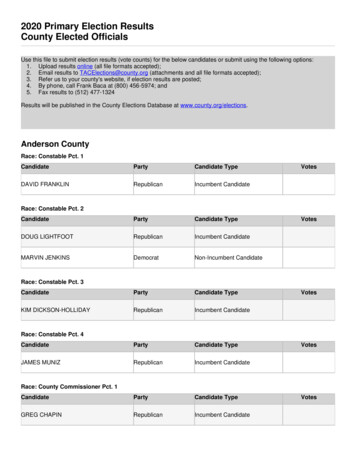

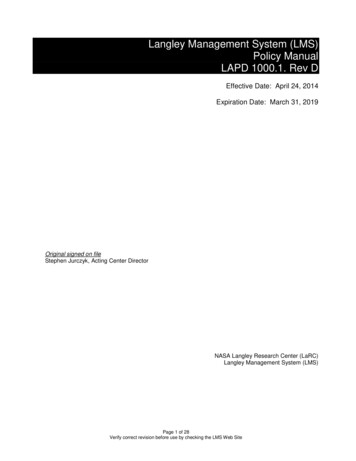
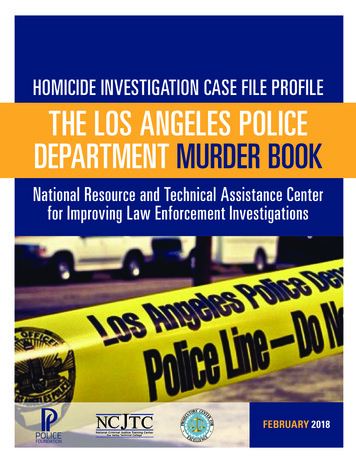



![OPTN Policies Effective as of April 28 2022 [9.9A]](/img/32/optn-policies.jpg)

